The Battle of the Bulge: Hitler's last roll of the dice to stave off disaster in the West
Eighty years ago to the day, Nazi Germany launched the Ardennes Offensive - its last major operation on the Western Front - a brutal battle that took place in bleak winter conditions and was a major turning point in the Second World War.
The Battle of the Bulge, described by Prime Minister Winston Churchill as "undoubtedly the greatest American battle" of WW2, was one of the war's bloodiest conflicts.
It resulted in approximately 75,000 Allied casualties, including 19,000 American, 200 British and 1,200 Canadian dead.
The battle also caused between 80,000 to 100,000 German casualties and the deaths of 3,000 civilians.
For 41 days, battle-fatigued US, British and Canadian soldiers fought German troops in bitterly cold conditions in the Ardennes Forest region of Belgium and Luxembourg, wearing inadequate uniforms, with some using white bedsheets to camouflage them in the snow.
However, despite his initial confidence, the battle didn't go as Hitler had planned.
Buoyed by Nazi Germany's success in 1940 when they were victorious during the Battle of France, Hitler believed his troops could successfully complete his latest mission in the Ardennes region with ease, but his generals weren't as convinced.

Hitler's last gamble
In the winter of 1944, five months after the Allied success on D-Day, German forces were in retreat.
However, Hitler believed an attack on what he perceived as a weak point in the woods of Belgium – a 60-mile front on American lines with six temporarily weakened American divisions defending it – could break the strong alliance between Britain and the United States.
This, he thought, would allow Germany to concentrate its efforts and resources on fighting the Soviet Union.
He also wanted German personnel to cross the River Meuse quickly to capture the key port of Antwerp, a key supply route for Allied forces.
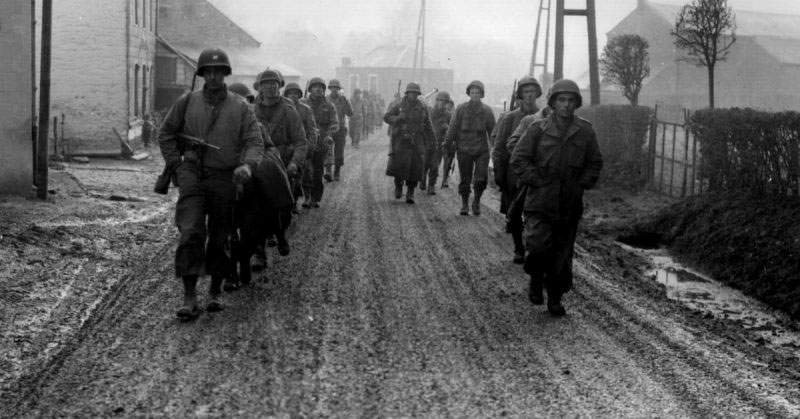
To prepare for this, Germany gathered about 300,000 men, more than 2,000 tanks and assault guns, plus about 1,900 artillery pieces.
However, they faced a significant challenge due to a shortage of fuel, caused by Allied attacks on the country's synthetic oil industry.
To ensure they had enough fuel to reach Antwerp, they needed to include the capture of Allied fuel depots in their strategy.
Therefore, Hitler's plan depended on several critical factors for it to be successful – fuel, supplies, skilled manpower and bad weather.
A brutal turning point
Initially known as the Ardennes Offensive, the month-long battle between 16 December 1944 and 25 January 1945 became known as the Battle of the Bulge because of its impact on the Allied frontline.
By the end of 1944, German ground forces were being constantly hampered by Allied air superiority.
Therefore, Hitler's plan relied on bad weather keeping Allied fighter jets and bombers that dominated the skies grounded so they couldn't delay the start of the offensive, codenamed Operation Watch on the Rhine.
With the plan put in place, at 05:30 on 16 December 1944, German forces launched an effective 90-minute surprise attack on the US Army's 110th Regiment.
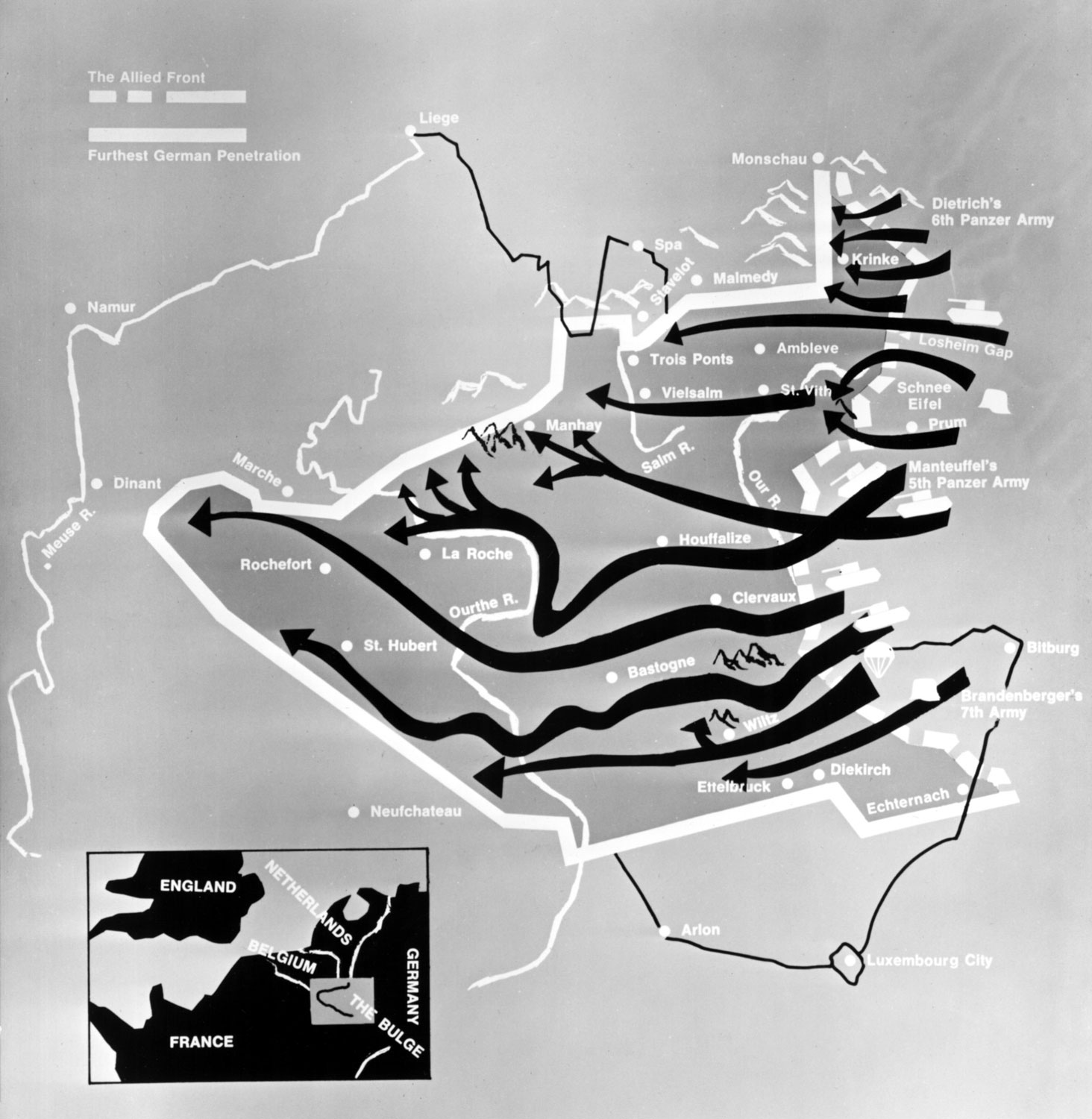
Later in the day, a German V2 rocket hit Cinema Rex in Antwerp, killing 567 people, including 296 Allied service personnel from Britain, the US, Poland and Canada, making it the deadliest rocket attack of the war.
The next day, at the Baugnez crossroads near Malmedy in Belgium, 113 American soldiers of Battery B of the 285th Field Artillery Observation Battalion surrendered to the 1st SS Panzer Division of the Sixth Panzer Army, commanded by Colonel Joachim "Jochen" Peiper following a brief battle.
After the American prisoners were disarmed, they were lined up in eight rows and then fired upon by machine guns held by SS troops.
Eighty-four soldiers died that day during what became known as the Malmedy Massacre.
A few dozen survived by pretending to be among the dead or fleeing the scene into nearby woods.
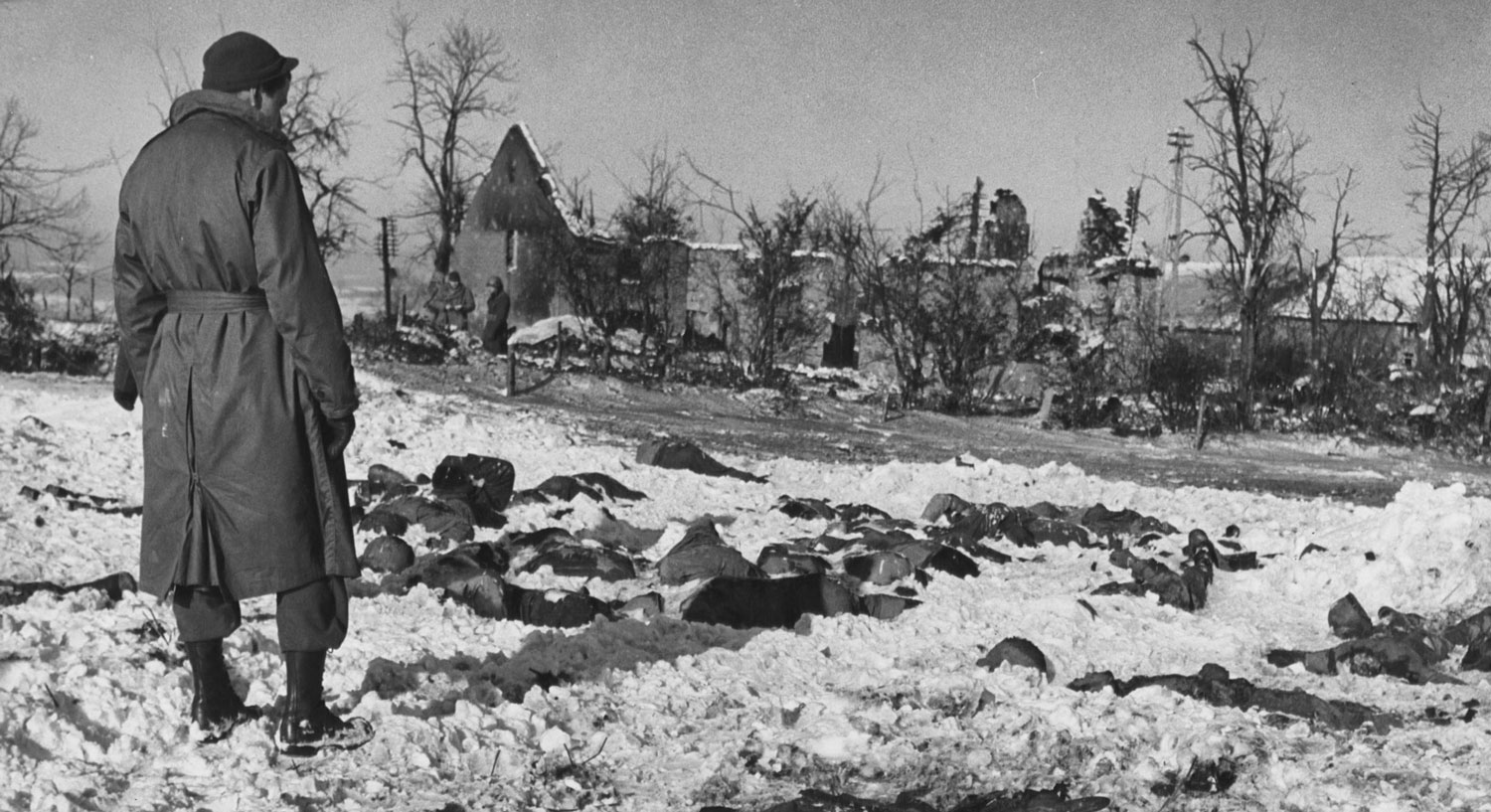
Dogged determination
A vital part of Hitler's plan was to capture St Vith in eastern Belgium by 18 December as it was the location of a vital road junction, but US troops fought valiantly and defended the city for five days.
Like St Vith, Bastogne was a crucial location for Hitler, having been liberated by Allied forces just three months earlier.
Seizing control of the Belgian town again would free the way for German forces to move swiftly to Antwerp.
Before long, the town of Bastogne found itself encircled by German troops, with the 82nd and 101st Airborne holding their ground.
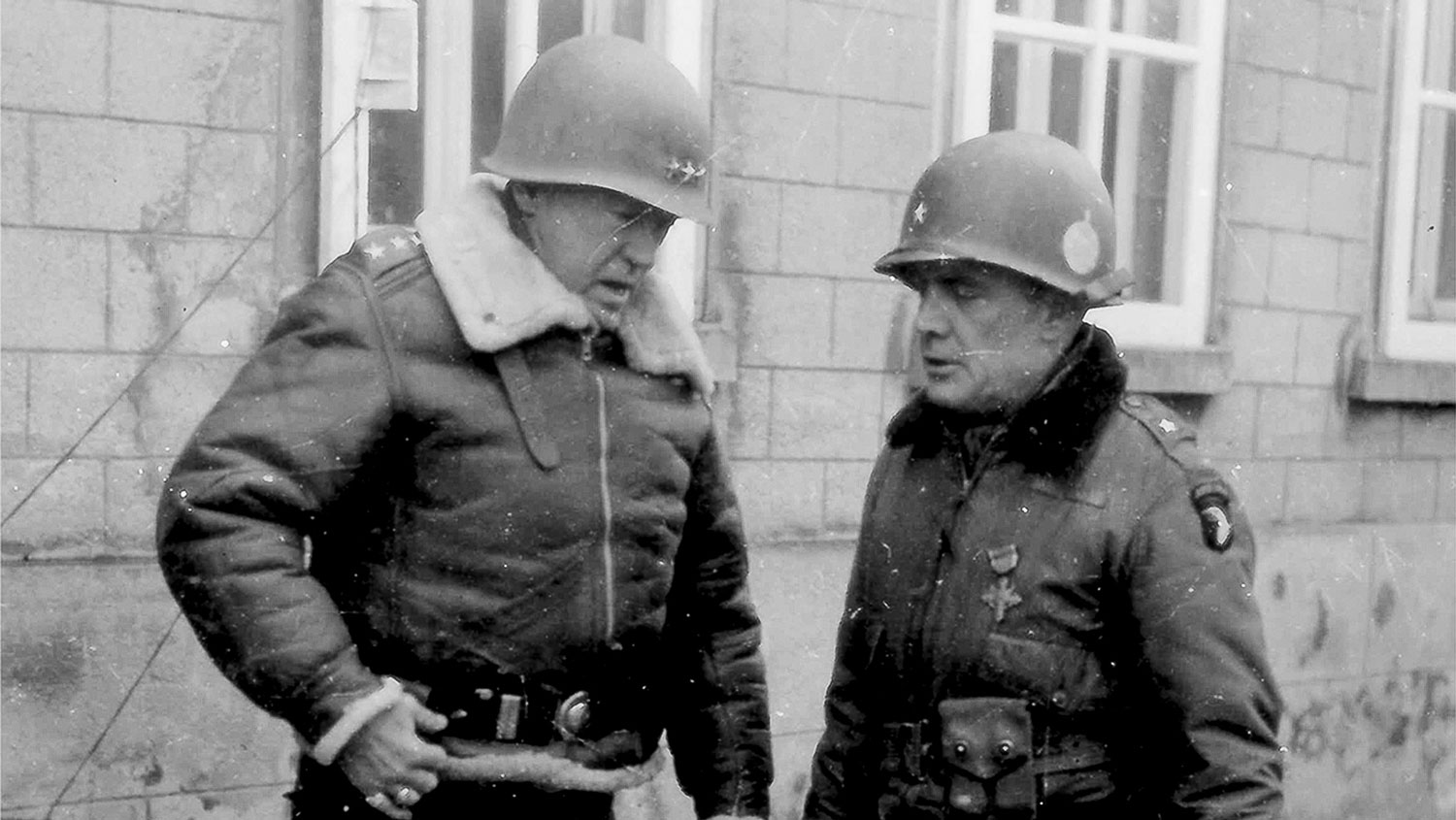
When they were encouraged by German forces to surrender, Brigadier General Anthony McAuliffe famously responded on 22 December with a typed-up note.
"To the German Commander,
"N U T S !
"The American Commander"
Given the dire circumstances, British soldiers from the 21st Army Group were called in for support.
Tank crews from the 7th Armoured Division who were supposed to be on a break, quickly made their way to the Ardennes to engage the German tanks.
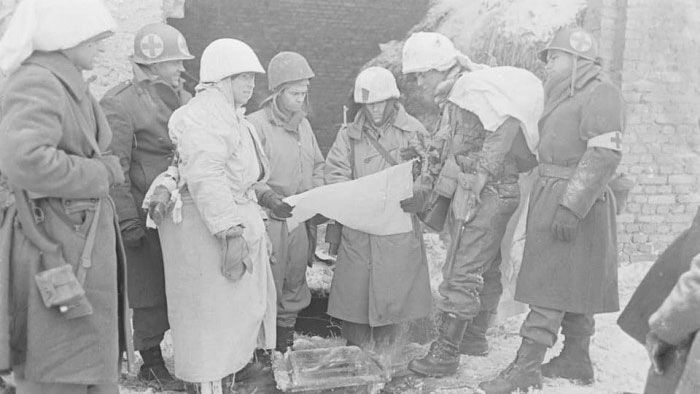
Hitler's plans are thwarted
For a week, relying on bad weather to ground Allied aircraft worked.
However, on 23 December, Hitler's plan, his last roll of the dice, started to fail when weather conditions began to improve.
At last Allied aircraft could attack the German supply routes, obliterate tanks and drop vital supplies to Allied troops in locations such as Bastogne.
And by Christmas Eve, Allied numbers had increased to 500,000 from different nations, slowing down the German advance significantly.
In addition to this, the lack of fuel was making Hitler's plan almost impossible.
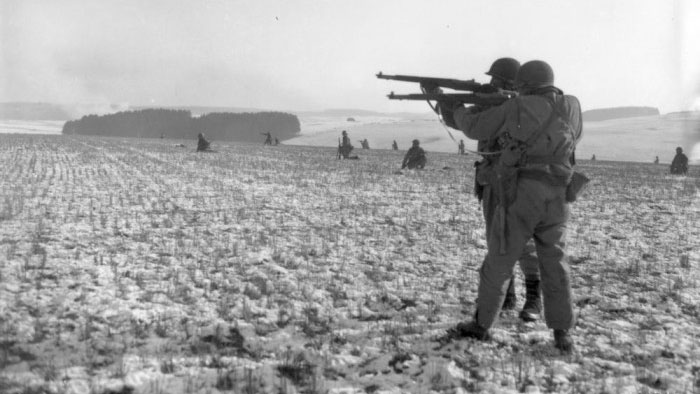
Several fuel depots German troops were depending on had been destroyed by soldiers of the Red Ball Express, predominantly black personnel who worked to supply the frontlines.
With Allied support, including paratroopers from 6th Airborne Division and soldiers from the 53rd (Welsh) Division, US troops launched fierce counterattacks that succeeded in pushing back the line to where it was before the offensive began.
The bulge was removed and Hitler's plan had failed.
As a result, Germany found itself vulnerable and open to attack.
This newfound weakness created an opportunity for the Soviet Union, which seized the moment to advance a substantial 300 miles into German territory when it launched their major offensive against the Nazis in January 1944.









